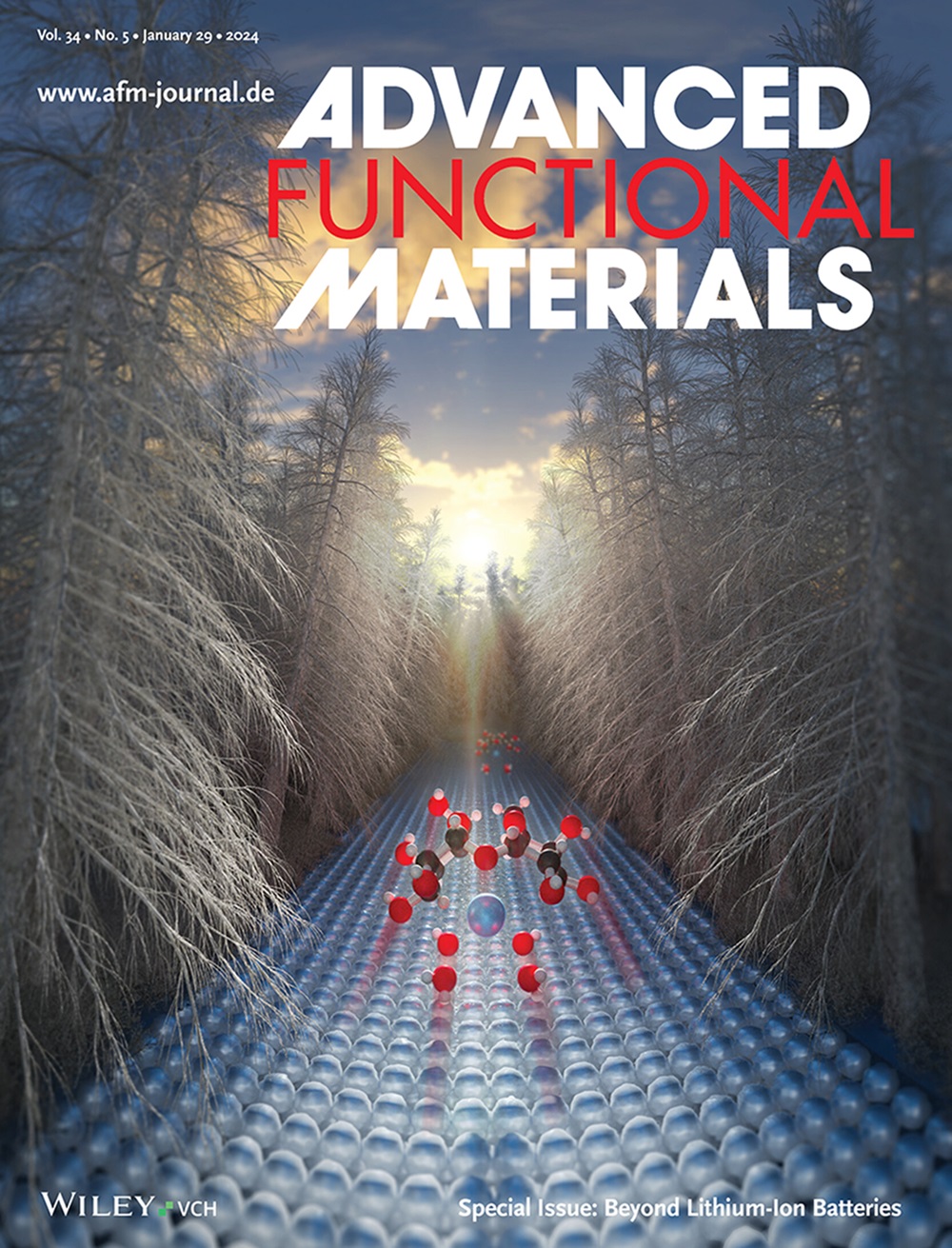Nitrogen and Oxygen Co-Doped Graphene Quantum Dots as a Trace Amphipathic Additive for Dendrite-Free Zn Anodes
IF 18.5
1区 材料科学
Q1 CHEMISTRY, MULTIDISCIPLINARY
引用次数: 0
Abstract
The practical implementation of aqueous zinc-ion batteries (AZIBs) has encountered obstacles stemming from the limited reversibility of the zinc anode, primarily due to dendrite proliferation and water-induced reactions occurring. In this investigation, a novel bifunctional interphase is proposed by integrating nitrogen and oxygen group graphene quantum dot (N-O-GQD) additives into the electrolyte. Experimental results and theoretical calculations demonstrate that the amphipathic N-O-GQD additive enhances the stability of the electrode by forming a protection layer on Zn surface. The zincophilic and hydrophobic nitrogen function groups stick to the surface of Zn electrodes to form a hydrophobic layer that shields water molecules from the electrode and promotes the uniform deposition of Zn. The hydrophilic hydroxyl function groups are exposed to the electrolyte to improve the compatibility at the electrode/electrolyte interface. As a result, the amphipathic N-O-GQD additive enables a robust cycling performance at high depth of discharge (DOD). Significantly, cells incorporating N-O-GQDs demonstrate a remarkable Coulombic efficiency of 99.7% over 900 cycles and sustain dendrite-free cycling for 564 h (DOD = 51%). Particularly noteworthy is the performance of the modified Zn||ZnVO full cell with robust cycling behavior, enduring 4 000 cycles at 10 A g−1.

氮氧共掺石墨烯量子点作为无枝晶锌阳极的微量两性添加剂
水性锌离子电池(AZIBs)的实际应用遇到了一些障碍,主要原因是锌阳极的可逆性有限,这主要是由于发生了枝晶增殖和水诱导反应。在这项研究中,通过在电解液中加入氮和氧基团石墨烯量子点(N-O-GQD)添加剂,提出了一种新型双功能相间物。实验结果和理论计算证明,两性N-O-GQD添加剂可在锌表面形成保护层,从而增强电极的稳定性。亲锌和疏水的氮功能基团粘附在锌电极表面,形成疏水层,将水分子阻挡在电极之外,促进了锌的均匀沉积。亲水性羟基官能团则暴露在电解质中,以改善电极/电解质界面的相容性。因此,两亲性 N-O-GQD 添加剂能在高放电深度 (DOD) 下实现稳定的循环性能。值得注意的是,含有 N-O-GQD 的电池在 900 次循环中显示出 99.7% 的出色库仑效率,并可持续 564 小时无树枝状突起循环(DOD = 51%)。尤其值得注意的是,改性 Zn||ZnVO 全电池具有强劲的循环性能,在 10 A g-1 的条件下可持续循环 4 000 次。
本文章由计算机程序翻译,如有差异,请以英文原文为准。
求助全文
约1分钟内获得全文
求助全文
来源期刊

Advanced Functional Materials
工程技术-材料科学:综合
CiteScore
29.50
自引率
4.20%
发文量
2086
审稿时长
2.1 months
期刊介绍:
Firmly established as a top-tier materials science journal, Advanced Functional Materials reports breakthrough research in all aspects of materials science, including nanotechnology, chemistry, physics, and biology every week.
Advanced Functional Materials is known for its rapid and fair peer review, quality content, and high impact, making it the first choice of the international materials science community.
 求助内容:
求助内容: 应助结果提醒方式:
应助结果提醒方式:


